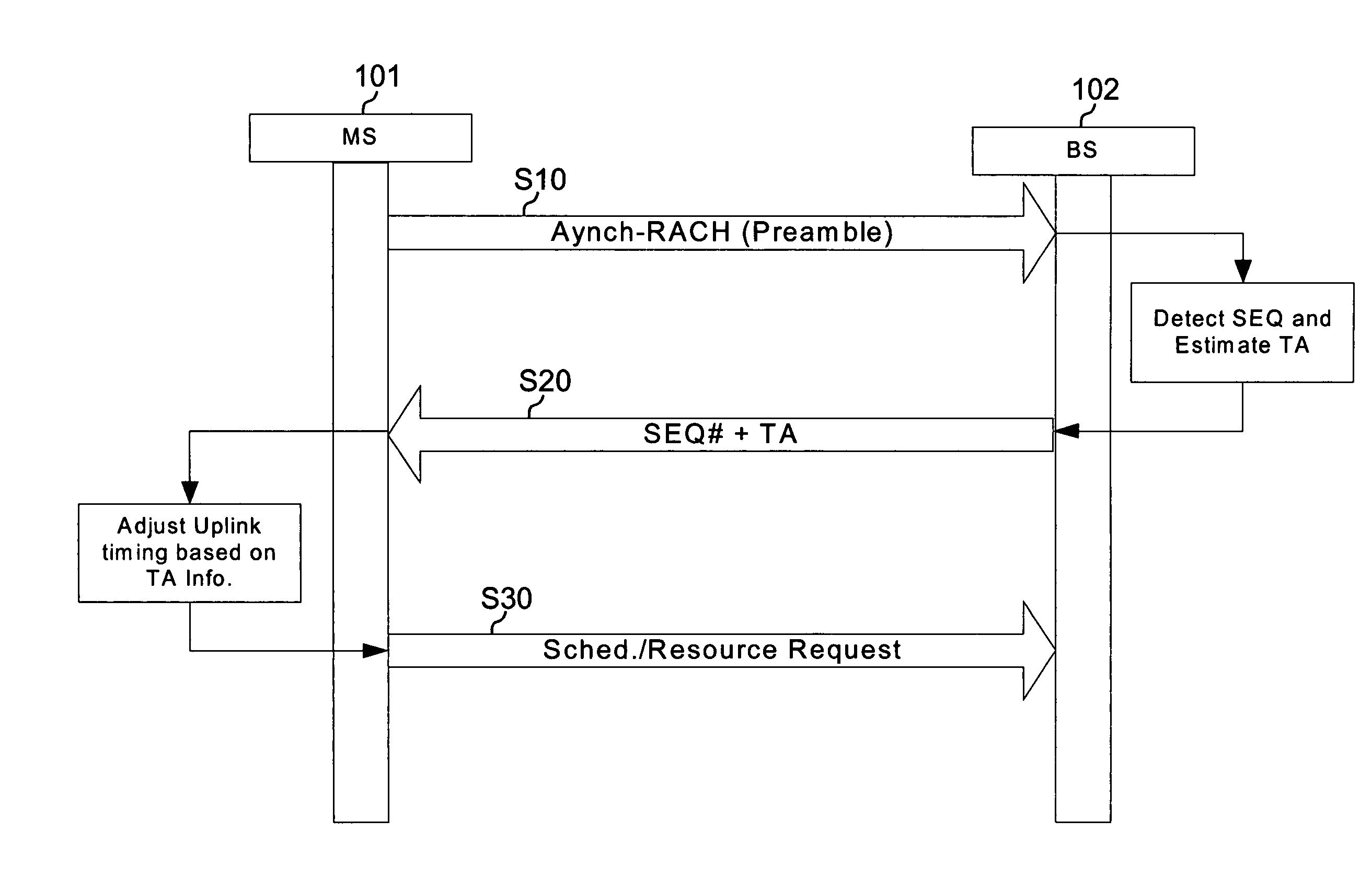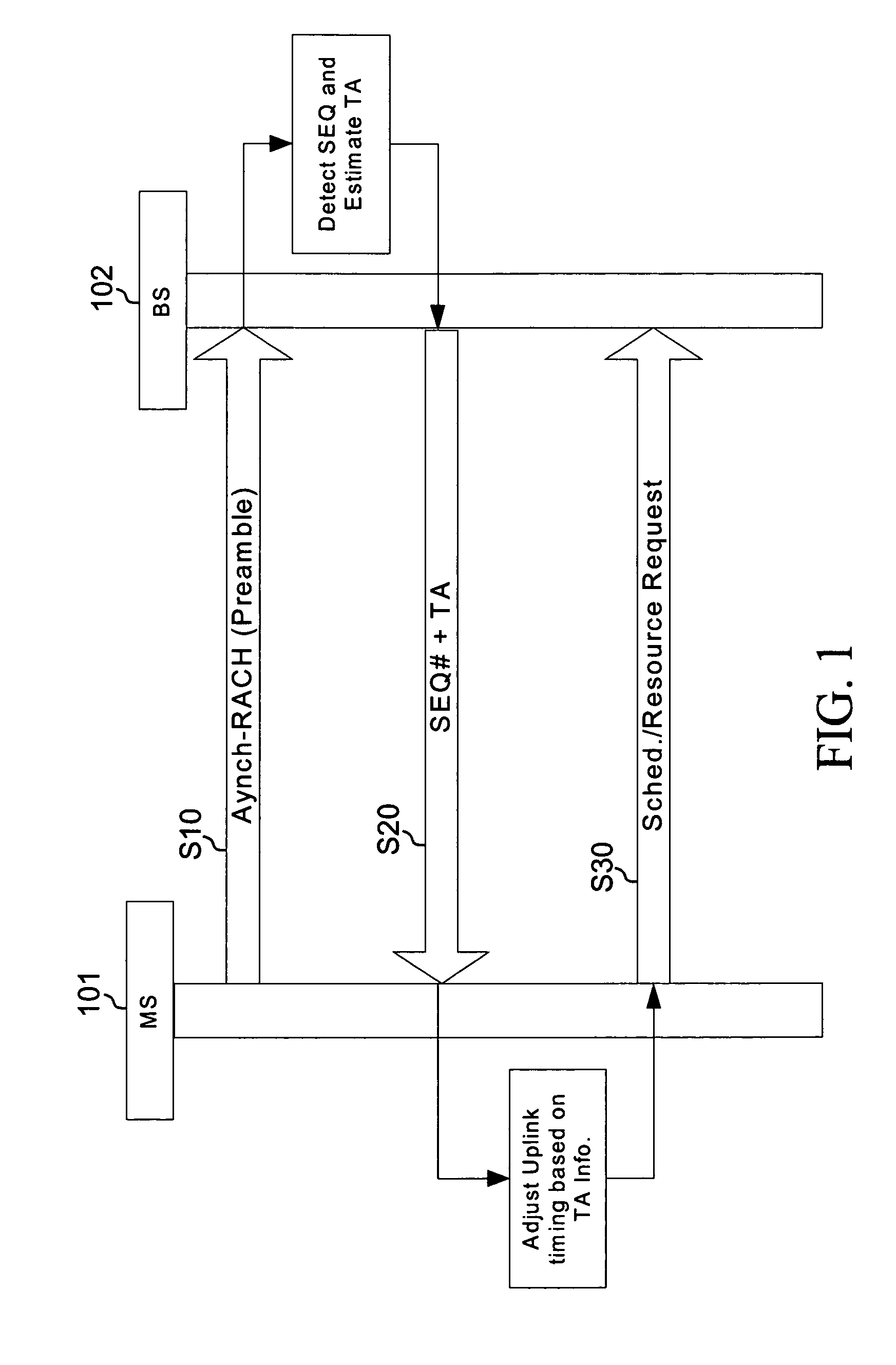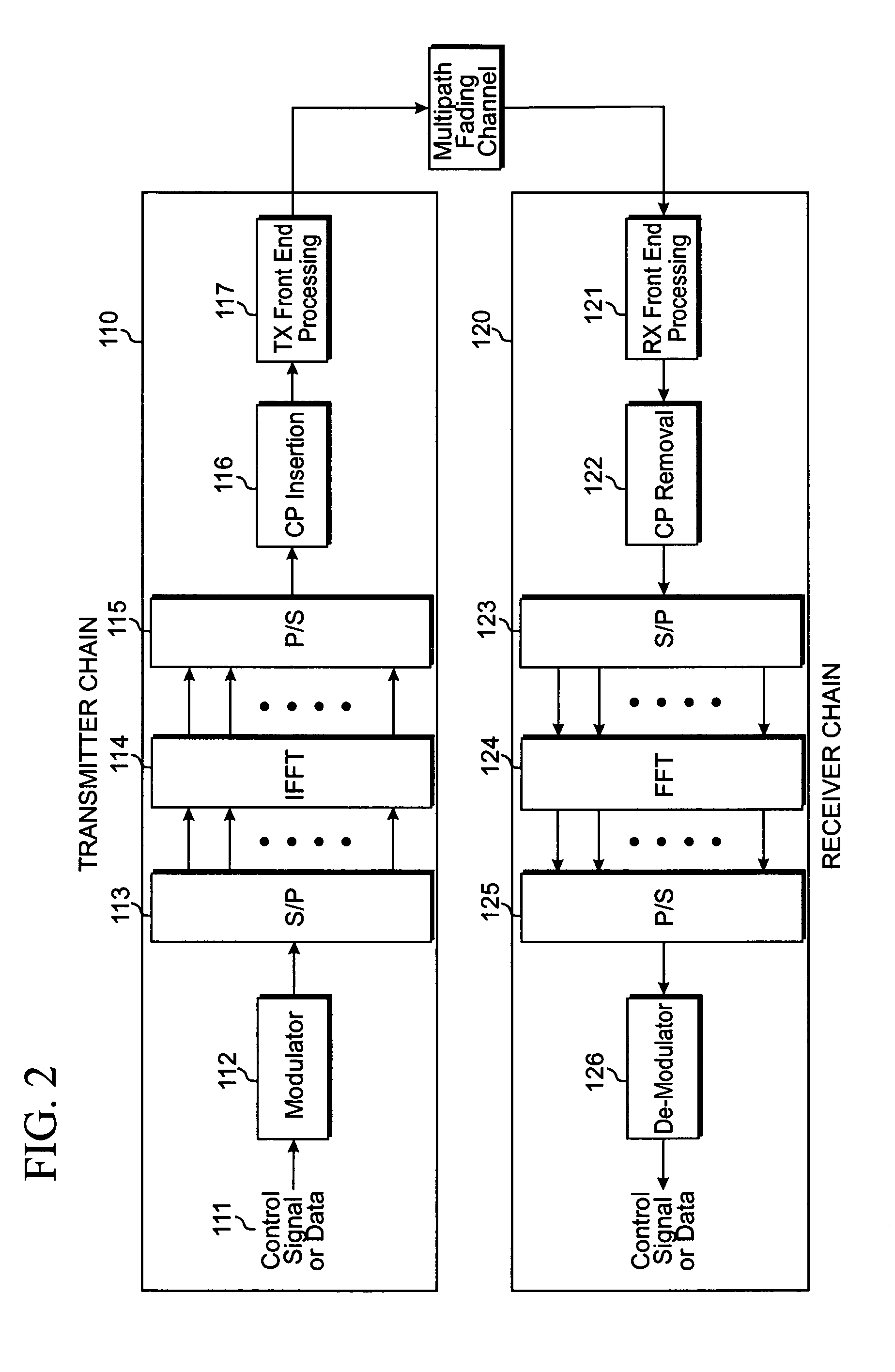Filtering and guard band for non-synchronized transmission
a filtering and guard band technology, applied in the field of non-synchronized transmission, can solve problems such as interference between data sub-bands and rach sub-bands
- Summary
- Abstract
- Description
- Claims
- Application Information
AI Technical Summary
Benefits of technology
Problems solved by technology
Method used
Image
Examples
Embodiment Construction
[0028]A random access procedure is used when a mobile station or a User Equipment (UE) turns on the power and need to access the wireless system. The random access procedure can be classified into two categories: non-synchronized random access, and synchronized random access.
[0029]The non-synchronized access is used when the UE is not uplink time-synchronized with the base station. This may happen when a UE turns on from a sleep mode or when a UE loses uplink timing synchronization. The non-synchronized access allows the base station (i.e., Node B) to estimate, and, if needed, adjust the UE transmission timing to within a fraction of a cyclic prefix. FIG. 1 is a flow diagram illustrating a random access procedure. As shown in FIG. 1, when a base station 102 receives a random access sequence from a mobile station 101 successfully (S10), base station 102 sends the information on the successful sequence (i.e., SEQ#) along with the timing advance (TA) information (S20). Mobile station 1...
PUM
 Login to View More
Login to View More Abstract
Description
Claims
Application Information
 Login to View More
Login to View More - R&D
- Intellectual Property
- Life Sciences
- Materials
- Tech Scout
- Unparalleled Data Quality
- Higher Quality Content
- 60% Fewer Hallucinations
Browse by: Latest US Patents, China's latest patents, Technical Efficacy Thesaurus, Application Domain, Technology Topic, Popular Technical Reports.
© 2025 PatSnap. All rights reserved.Legal|Privacy policy|Modern Slavery Act Transparency Statement|Sitemap|About US| Contact US: help@patsnap.com



